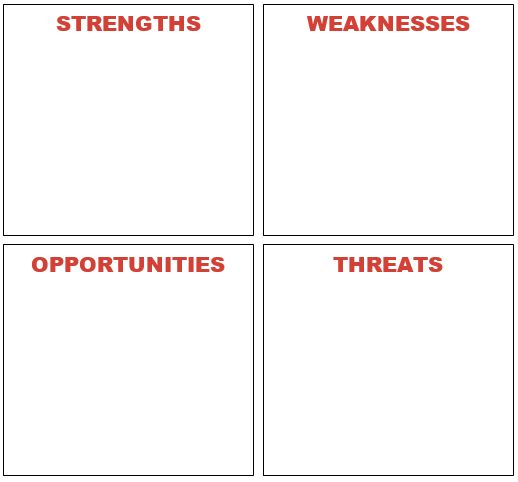 Reading Time: 7 minutes
Reading Time: 7 minutes“If you know your enemies and know yourself, you can win a hundred battles. If you only know yourself, but not your opponent, you may win or lose. If you know neither yourself nor your enemy, you will always endanger yourself.” — Sun Tzu, The Art of War
Sun Tzu may have lived in the 6th century BCE and be characterized as a Chinese military strategist, but he was also a Taoist philosopher whose words are meant for us today. According to Jamie Gutfreund, chief strategy officer for the Intelligence Group, a full 86 million millennials will be in the workplace by 2020—representing a full 40% of the total working population. Given the millennial generation’s known need for autonomy in the workplace as well as at home, this statistic is particularly striking.
This basic desire for self-sufficiency results in a need for more intense personal development. You are most likely to succeed in life if you use your talents to their fullest extent and you will suffer fewer problems if you know your weaknesses. This drive for personal development and the desire to balance your strengths and weaknesses are the basis of what it means to perform a self-SWOT analysis.
When you are striving to be your personal best, self-assessment is crucial. The SWOT analysis exercise provides you with a heightened awareness of what you can bring to the table by highlighting both advantages and challenges.
What Is a SWOT Analysis?
The acronym SWOT stands for: strengths, weaknesses, opportunities, and threats. When a business wants to assess a new product or examine an industry, they typically use this type of analysis. SWOT can be an extremely powerful tool to uncover opportunities that may have gone otherwise unnoticed.
The analysis also creates an understanding of weaknesses that will allow the management and elimination of threats that might otherwise hurt the ability to progress. This awareness became important in recent years for McDonalds, who was the industry leader in providing low-cost food options to their customers. However, their greatest strength transformed into their greatest weakness and threatened to do away with their dominance over the market. The demand was changing—people not only wanted low-cost food, they wanted low-cost healthy food and McDonalds had to make drastic changes to keep up with the demand.
In our personal lives, a self-SWOT analysis will work to showcase our current disposition as well as provide an action plan that will guide us on the path to personal development—said another way, it gives us a look at who and where we are now and lets us create a path to who and where we want to be. Using the SWOT matrix will help us advance our careers and achieve personal goals by developing the specialized talents and abilities that will separate us from our peers. The analysis will also prepare us to face the many challenges uncovered on our journey of fulfillment.
So how you go about identifying these strengths and weaknesses, and analyzing the opportunities and threats that emanate from them? Well, we’re going to do a little homework assignment together. Step one is to click here to download my SWOT worksheet. Step two is to fill out the worksheet by walking through the four quadrants with me:
1. Strengths
When considering your strengths, do your best to be as objective as possible, and don’t be modest or shy. Knowing and using your strengths will make you happier and more fulfilled at work as well as at home.
If you are experiencing some difficulty giving yourself a pat on the back, start by writing down a list of your personal characteristics. More often than not, these characteristics will be strengths. Take a look at this list below to see if you can find some of your own strengths:
- Open-Minded
- Inspiring
- Visionary
- Willpower
- Confident
Keep in mind that strengths should be thought of in relation to the people around you. For example, if you are a great teacher, but the people around you are also great teachers then this may not be a strength—it may just be a necessity in your current role. Consider what makes you stand out.
2. Weaknesses
Again, be as objective as possible. Which of your traits hold you back from your own personal development? What is stopping you from being successful when it comes to finance, health, happiness, or relationships?
Consider personal traits from both internal and external sources. Weaknesses in your personal skills or social network can increase your vulnerability and make it difficult to respond to external threats. This presents a great opportunity to reach out to friends and colleagues and get their honest opinion. Sometimes, you can be too close to yourself to see some of your weakness and an outside perspective will be useful. Some of the weaknesses you may come up with are:
- Lazy
- Ignorant
- Slow
- Stubborn
- Hesitant
Most importantly, as you identify your weaknesses, ask yourself if more doors would be opened if you eliminated some of those weaknesses. Keep that in your mind, because next we’re going to look for those open doors.
3. Opportunities
Your list of strengths will be your guide when listing your opportunities. Your opportunities should reveal themselves as being in alignment with your strengths, as well as be compliments to your current skills. If you haven’t assessed current opportunities, then you may be out of touch with what is potentially available to you.
Here is a list of opportunities you may find useful:
- Educational classes or conferences.
- A new role or project that forces you to learn new skills.
- A company or family expansion or acquisition. Do you have specific skills that could help with the process?
4. Threats
Threats and fears are almost indistinguishable in this section. They are most closely related to your weaknesses and many times threaten your developmental journey. Make sure to elaborate on the items you place in this section because they will point out what needs to be done and will put your problems into perspective. Many people or things will be obstacles to your success. Identify those and make sure you aren’t one of them. Here are a few examples of where threats may come from:
- Is there strong competition in your area of expertise?
- Do your weaknesses inhibit your ability to rise in your company or change jobs?
- What is the biggest danger to your goals?
- Are there any new professional standards you cannot meet?
Watch out for the pace of today’s society since the rapid change means that you must continuously monitor threats and be prepared to adjust your strategy as new threats emerge.
What to Do With Your SWOT Analysis
Once your personal SWOT analysis is complete, it is crucial to follow through on the insights you uncovered. There are several ways to analyze your information and begin building your plan of action.
One way to analyze your matrix is by connecting two of the categories to determine your best course of action. Matching your strengths and opportunities will give you a better idea on where to be aggressive and take action. On the flip side, being able to match weaknesses and threats will aid in exposing areas that need to be worked on and the types of situations you may want to avoid in the interim. For me, one of my greatest weaknesses when I was trying to lose weight was my inability to say no to my temptations. I had to force myself to not even go near foods that would hamper my weight-loss goals until I had the strength to resist my vices when placed in front of me.
Another strategy is to convert your negatives into positives. Conversion of your weaknesses into strengths, or of your threats into opportunities, will force you to think outside of the box and find creative ways of taking action. For example, you may be very ambitious but you sit at your desk all day and lack proper public speaking skills to improve your situation. Taking a public speaking course or volunteering for community outreach programs will allow you to interact with more people and begin to soothe your public speaking fear. Converting this former weakness into a current strength will allow you to excel within your environment.
Where your personal SWOT analysis will fail to be effective is if it is treated like any other “to-do” list. The most common issue that people run into is the inability to link the items in the matrix and then put them into action. Ask yourself, “How can I navigate my potential threats once it is identified and how do I ensure I don’t regress?” Taking action to achieve your promotion, potty trained kids, a better mile time, or happiness about what you see in the mirror will benefit you on a personal and professional level and begin to set you apart from your peers and colleagues.







